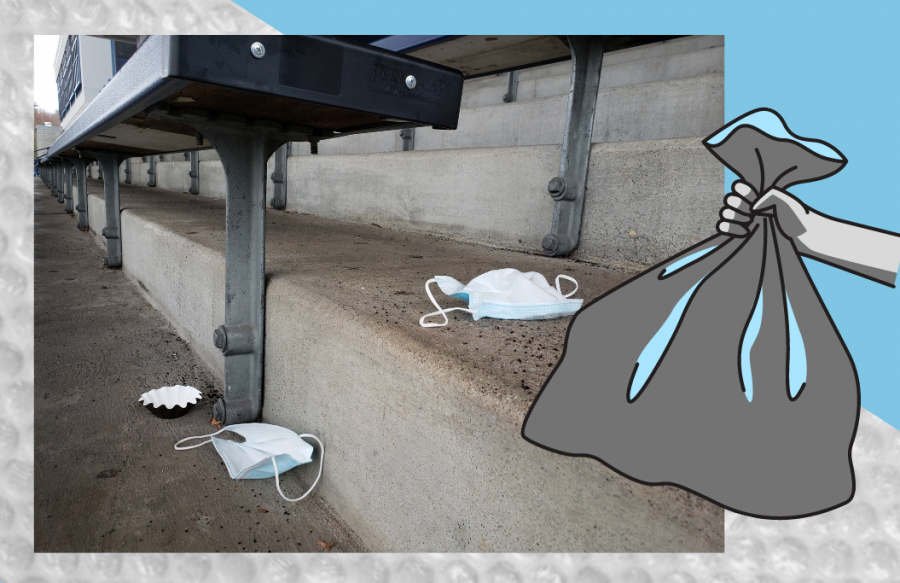COVID brings an increase in single-use plastics
January 7, 2021
During the pandemic, lifestyle changes and adapting demands on health and safety systems have led to a skyrocketing dependence on non-recyclable plastics.
While travel restrictions and slowed economic activity have contributed to temporary decreases in emissions and some forms of pollution, negative environmental effects indirectly caused by COVID are equally important to address.
Locally, it’s easy to see the physical forms of rising plastic usage. From disposable masks littered on the LOHS track to the non-recyclable packaging of online orders to takeout containers, the ugly consequences of lifestyle changes have piled up in landfills and oceans. Beyond individual contributions, the demand for disposable personal protective equipment (PPE) in medical settings has steeply increased with peaks in COVID hospitalizations nationally and internationally. Global sales of disposable masks increased from $800 million in 2019 to $166 billion in 2020, translating to around 89 million medical masks per month, according to the World Health Organization.
One littered mask may not seem significant, but the overwhelming scale of improper waste disposal can have large impacts. Improper waste management of these disposables can threaten public health and pose environmental risks through the release of toxic substances and threaten a range of ecosystems. A July 30, 2020 UN report forecasted around 75 percent of used masks will end up in landfills and the ocean.
Further up the manufacturing chain, reduced economic activity knocked oil prices down steeply, with the most dramatic impact at the beginning of the worldwide spread. As a result, manufacturers were incentivized to use fossil-based materials to produce plastics, rather than the more sustainable option of recycled materials.
In addition, the pandemic’s effect on plastic use comes at a time where countless areas are already struggling to improve their recycling infrastructure. Oregon’s waste recovery rates, which measure the percentage of solid waste recycled, have decreased since 2012, staying well below 50 percent and the goal for 2020 of 52 percent. With the pandemic’s increased demand for single-use plastics, it’s unlikely that the goal has been achieved (there is a delay in reporting statewide waste survey results for each year).
Improving sustainability in waste management is possible with individual changes, policy improvement and innovation in biodegradable and reusable materials. Small lifestyle changes that can add up include choosing reusable masks over disposable ones, following local recycling guidelines to avoid contamination and reducing the use of single use plastics. Scientific work on producing a range of biodegradable materials could have potential in the future, as new eco-friendly polymers are being researched to replace the toxic chemicals emitted during decomposition.
Statewide, the 2019 Sustainable Shopping Initiative banned single use plastic bags and placed fees on paper bags to encourage reusable bags, but safety concerns from the pandemic have resulted in weaker enforcement in some areas. Oregon and many other areas are still struggling with adequate recycling infrastructure to process a wider range of plastics included in packaging.


